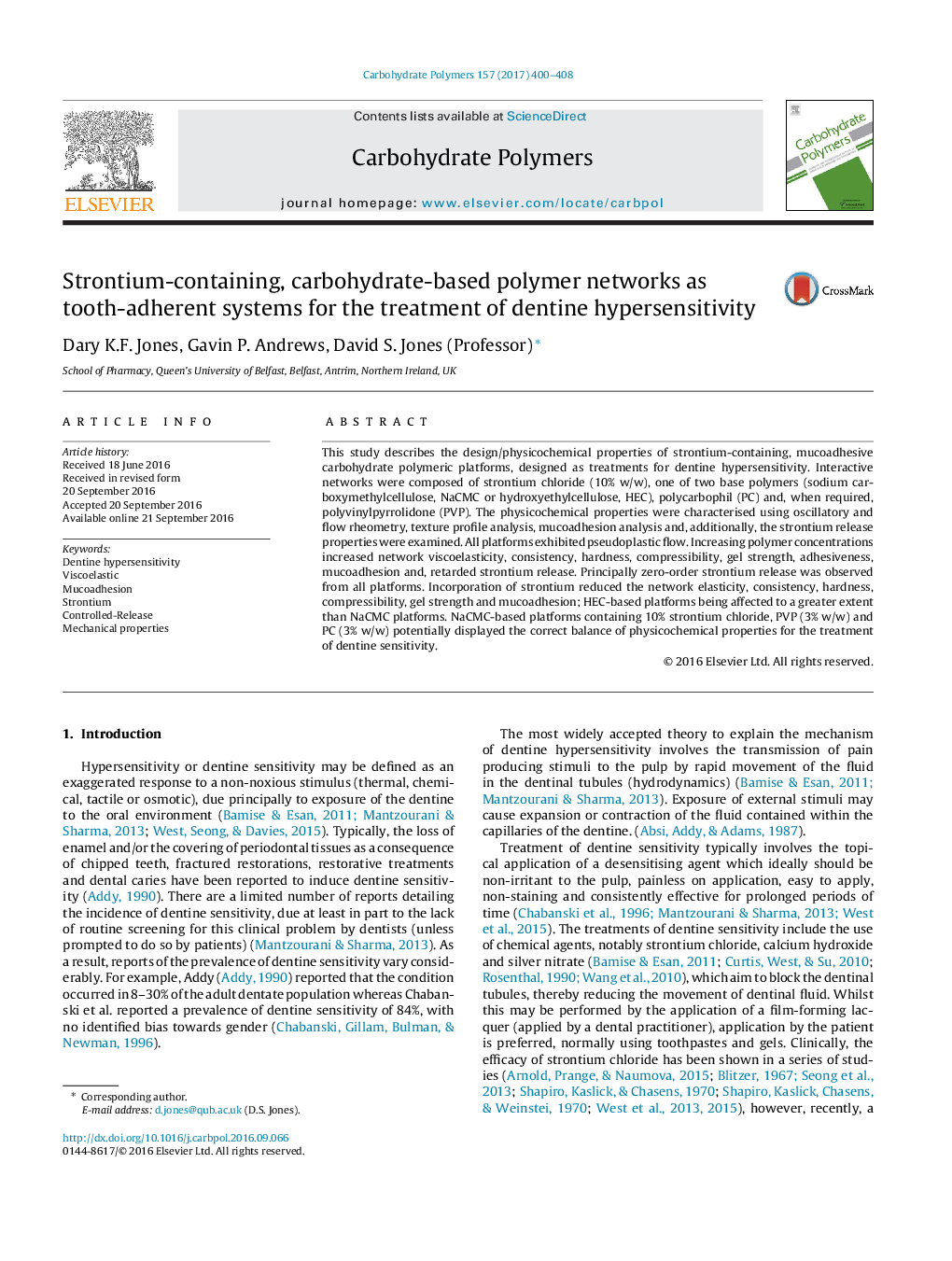| Article ID | Journal | Published Year | Pages | File Type |
|---|---|---|---|---|
| 5157836 | Carbohydrate Polymers | 2017 | 9 Pages |
Abstract
This study describes the design/physicochemical properties of strontium-containing, mucoadhesive carbohydrate polymeric platforms, designed as treatments for dentine hypersensitivity. Interactive networks were composed of strontium chloride (10% w/w), one of two base polymers (sodium carboxymethylcellulose, NaCMC or hydroxyethylcellulose, HEC), polycarbophil (PC) and, when required, polyvinylpyrrolidone (PVP). The physicochemical properties were characterised using oscillatory and flow rheometry, texture profile analysis, mucoadhesion analysis and, additionally, the strontium release properties were examined. All platforms exhibited pseudoplastic flow. Increasing polymer concentrations increased network viscoelasticity, consistency, hardness, compressibility, gel strength, adhesiveness, mucoadhesion and, retarded strontium release. Principally zero-order strontium release was observed from all platforms. Incorporation of strontium reduced the network elasticity, consistency, hardness, compressibility, gel strength and mucoadhesion; HEC-based platforms being affected to a greater extent than NaCMC platforms. NaCMC-based platforms containing 10% strontium chloride, PVP (3% w/w) and PC (3% w/w) potentially displayed the correct balance of physicochemical properties for the treatment of dentine sensitivity.
Keywords
Related Topics
Physical Sciences and Engineering
Chemistry
Organic Chemistry
Authors
Dary K.F. Jones, Gavin P. Andrews, David S. (Professor),
